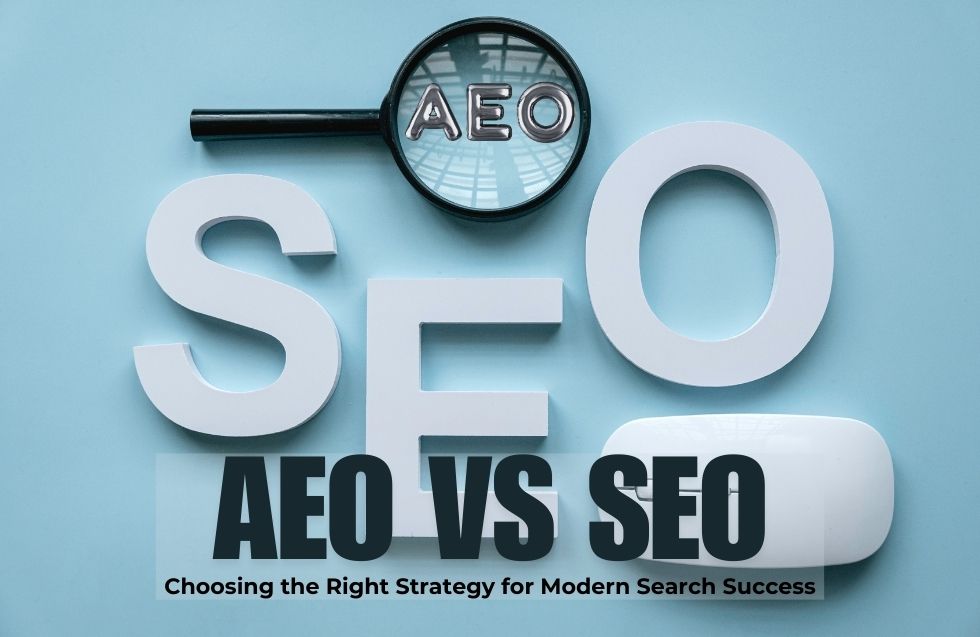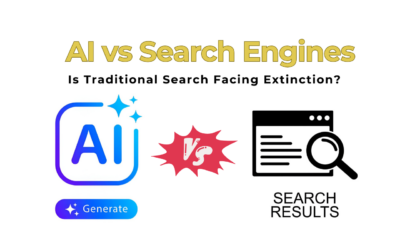In today’s digital-first world, the methods for reaching customers have evolved rapidly. Where traditional Search Engine Optimization (SEO) once dominated, Answer Engine Optimization (AEO) has started to emerge as a critical element in search strategies. As AI-powered search and voice assistants gain popularity, knowing when to prioritize AEO over SEO (or vice versa) can be crucial for businesses looking to stay relevant. This article delves into the distinctions between AEO and SEO, explores their unique applications, and offers guidance on how to decide which one best aligns with your business objectives.
What Is SEO?
SEO (Search Engine Optimization) refers to the strategies and techniques aimed at improving a website’s ranking on search engine results pages (SERPs). The goal of SEO is to make web content more visible by aligning it with specific search terms, enhancing a site’s credibility, and improving user experience.
Key components of SEO include:
- Keyword Optimization: Identifying and using keywords that users are likely to search for.
- Content Quality: Creating informative, engaging, and relevant content that addresses user needs.
- On-page and Off-page SEO: Structuring content on a webpage for optimal readability and credibility, while building backlinks from other reputable sites.
- Technical SEO: Ensuring a site is accessible, mobile-friendly, and loads quickly.
In short, SEO aims to match users’ search queries to relevant web pages, encouraging them to click through and explore.
What Is AEO?
AEO (Answer Engine Optimization), on the other hand, is about providing direct answers to specific user questions, often without the need for the user to click through to a website. This approach has become more relevant with the rise of voice-activated assistants like Alexa, Siri, and Google Assistant. AEO aims to optimize content so that it can be presented directly as an answer by these platforms.
Key aspects of AEO include:
- Answering Questions Directly: Structuring content to provide short, accurate, and clear answers to common questions.
- Leveraging Structured Data: Using schema markup and other metadata to help search engines easily identify relevant pieces of information.
- Optimizing for Voice Search: Since voice search queries are often conversational, AEO focuses on content that reflects natural language and long-tail keywords.
- Context and Intent Recognition: Understanding the user’s intent and providing contextually accurate answers, often within a single sentence or snippet.
While SEO tries to drive traffic to a webpage, AEO is often about capturing user engagement within the search interface itself.
Core Differences Between AEO and SEO
To choose the right strategy, it’s essential to understand the key differences between AEO and SEO. Here’s a breakdown:
Why AEO Matters in Today’s Search Landscape
The shift toward voice search, conversational AI, and mobile devices has transformed how users interact with search engines. By 2024, it’s estimated that over half of all searches will be voice-activated, and most of these queries are question-based and conversational. This trend has driven the demand for quick, on-the-spot answers, making AEO a natural choice for brands focused on appearing in these spaces.
Key benefits of AEO include:
- Increased Visibility on Voice Search Platforms: AEO content is structured to be chosen by voice assistants, which often prioritize concise, answer-based responses.
- Higher Trust and Engagement: When users get answers directly from search engines or voice assistants, it builds trust and keeps them engaged with the brand.
- Lower Bounce Rates: Since AEO provides immediate answers, it helps reduce bounce rates by meeting user intent instantly.
Why SEO Still Matters
While AEO offers value for voice and AI search contexts, SEO is far from obsolete. For more complex questions or topics, users still prefer to click through to websites to read in-depth articles, compare options, and explore multimedia content. SEO remains indispensable for building brand credibility and driving sustained traffic over time.
Benefits of SEO:
- Sustained Traffic and Engagement: SEO brings users to your website, where you can keep them engaged longer with content and resources.
- Control Over Content Presentation: With SEO, brands have more control over the experience users have on their websites, which can impact brand perception and conversions.
- In-depth Content Opportunities: SEO is ideal for lengthy, detailed content that provides comprehensive answers and builds authority.
Choosing Between AEO and SEO: When to Use Each
- Consider Your Target Audience: Are they more likely to use voice search or text-based search? For example, a business targeting younger, tech-savvy consumers may benefit more from AEO strategies, while an audience looking for in-depth information (such as finance or healthcare) may still prefer traditional SEO.
- Understand Your Content Goals: If your content aims to inform and educate in-depth, SEO is likely the better fit. On the other hand, if you’re aiming to capture traffic by answering quick questions or appearing in “near me” or “how-to” voice queries, AEO should be prioritized.
- Evaluate Resources and ROI: AEO typically requires more granular content creation efforts to rank in voice searches and featured snippets, while SEO involves broad optimization of the entire website. Evaluate which approach gives you the best return based on your budget and resources.
- Analyze Competitor Strategies: What are your competitors doing? If they focus heavily on SEO but ignore AEO, investing in AEO could give you an edge in voice search. Conversely, if AEO dominates, you may want to improve your SEO rankings to attract users seeking detailed content.
- Measure Success and Adapt: Use metrics like click-through rates (CTR) and conversion rates for SEO, while tracking voice search impressions and featured snippet appearances for AEO. Constantly review performance data and refine your strategy to optimize for both approaches.
Combining AEO and SEO: Best Practices for a Holistic Strategy
For businesses today, integrating both AEO and SEO approaches can be highly effective. Here are some best practices:
- Use Schema Markup for Both SEO and AEO: Adding structured data (schema markup) helps search engines understand and display content accurately. Schema is essential for AEO, as it allows Google and other engines to pull out answers more efficiently.
- Write Conversational, Natural Content: For AEO, content should be conversational to reflect natural language queries. This will also improve SEO by making content more readable and engaging.
- Optimize for Featured Snippets: Featured snippets provide direct answers on the SERP itself. To target these, write content that concisely answers specific questions in a structured format, while also providing more in-depth information further down the page for SEO benefits.
- Use Long-tail Keywords and Questions: Both AEO vs SEO can benefit from long-tail keywords. Include question-based phrases that match user search behavior, especially for voice queries.
- Develop a Comprehensive FAQ Section: A well-crafted FAQ page can serve both AEO and SEO goals. Each question provides an opportunity for quick, concise answers for AEO while enhancing keyword presence for SEO.
Conclusion: The Right Strategy for Your Business
Both AEO and SEO have critical roles in modern search strategy, but the choice depends on your business’s unique needs, audience, and goals. If your objective is to dominate voice search and capture users with quick answers, then AEO is a strong focus. Conversely, if you aim to build long-term engagement and drive substantial website traffic, SEO is essential.
In many cases, however, a hybrid strategy that combines both AEO vs SEO practices is ideal. As search behaviors continue to evolve, balancing these two approaches can provide a competitive edge, ensuring that you meet users wherever they are—whether they’re speaking into a voice assistant or typing on their laptops.
With a clear understanding of AEO vs SEO and a willingness to adapt as search technology advances, businesses can ensure lasting success in the ever-changing digital landscape.
This article offers a thorough look at AEO vs SEO and can help guide readers in making the best choice for their business.













